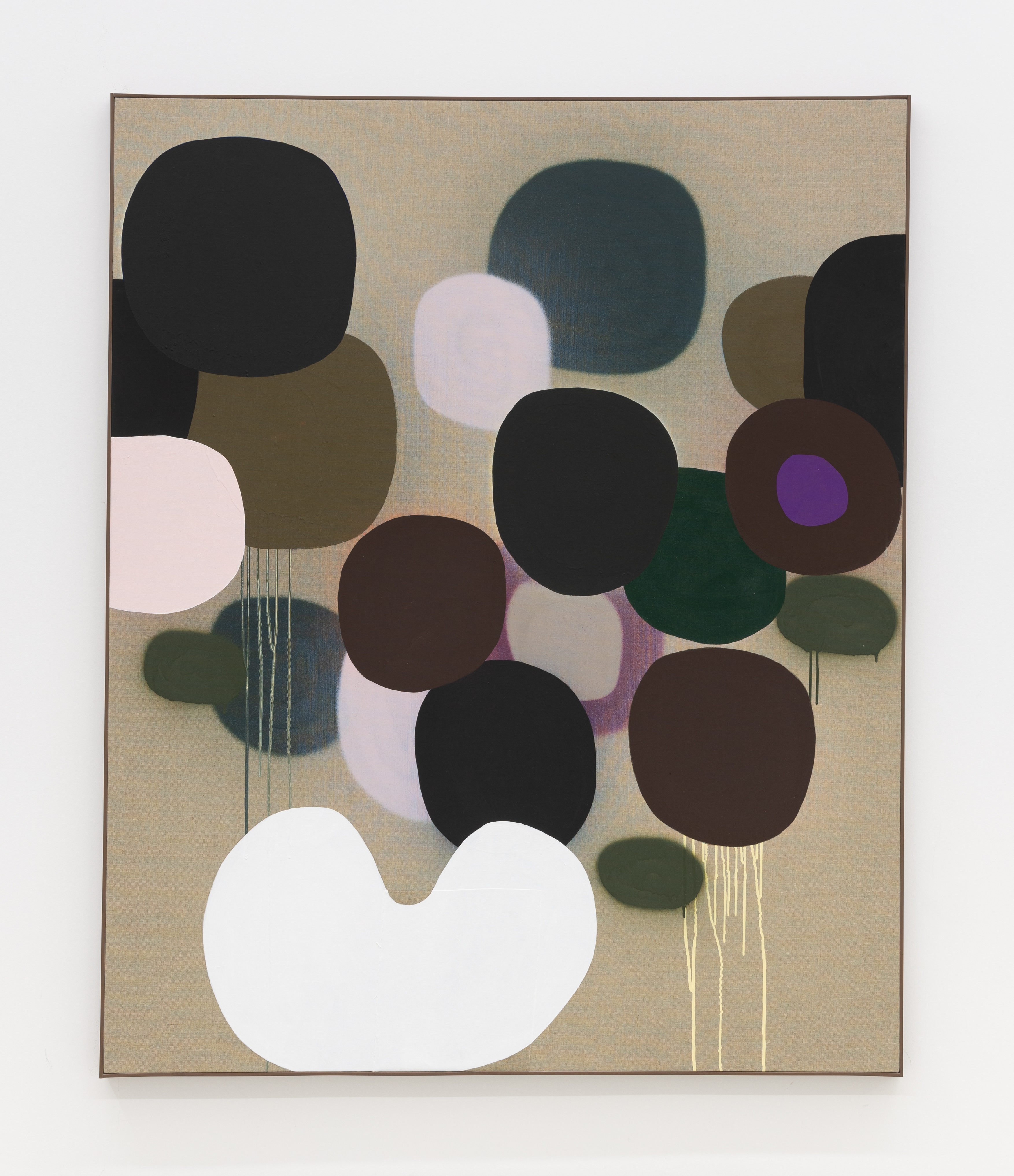
Óscar Florit
4 8 15 16 23 42
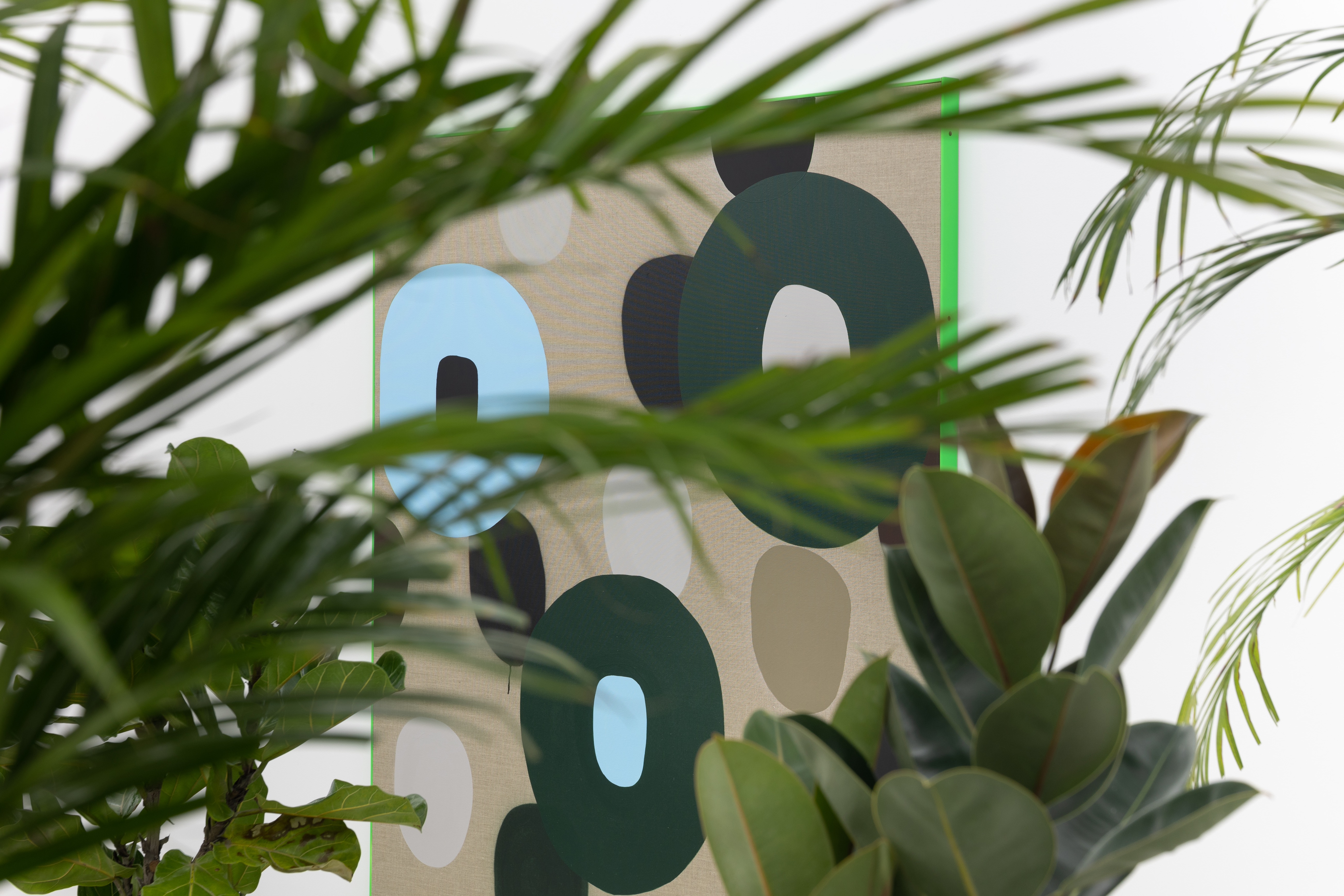

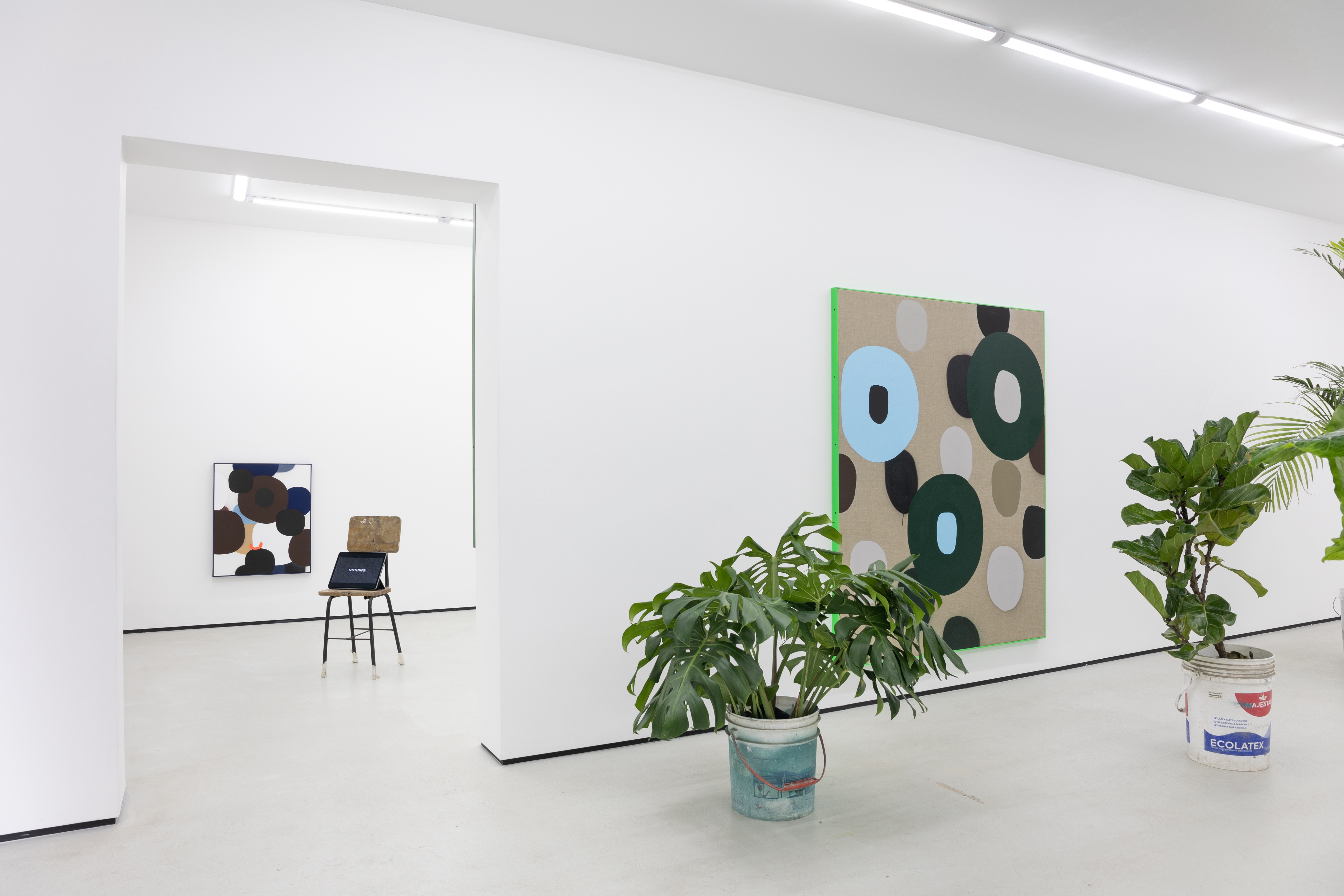

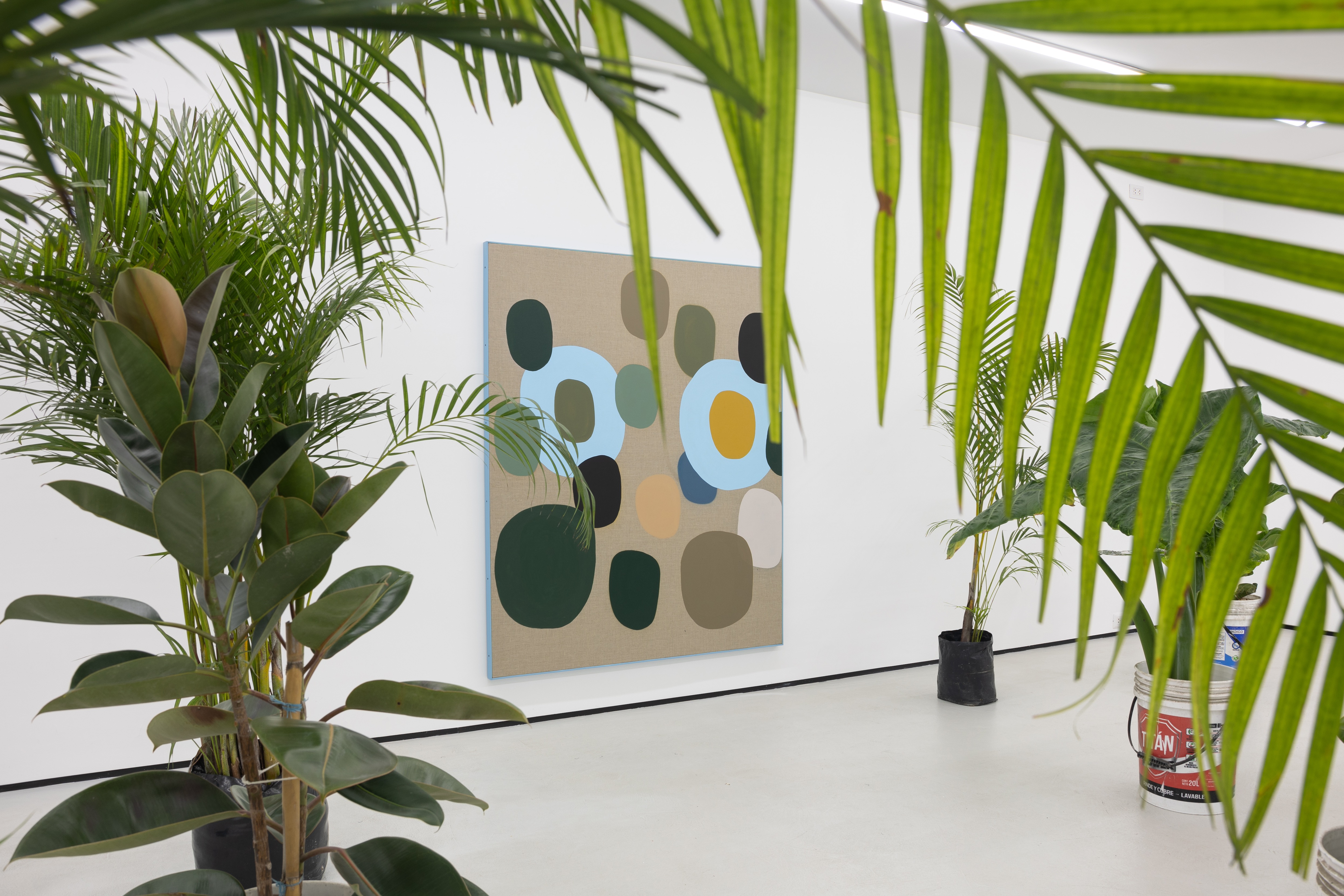

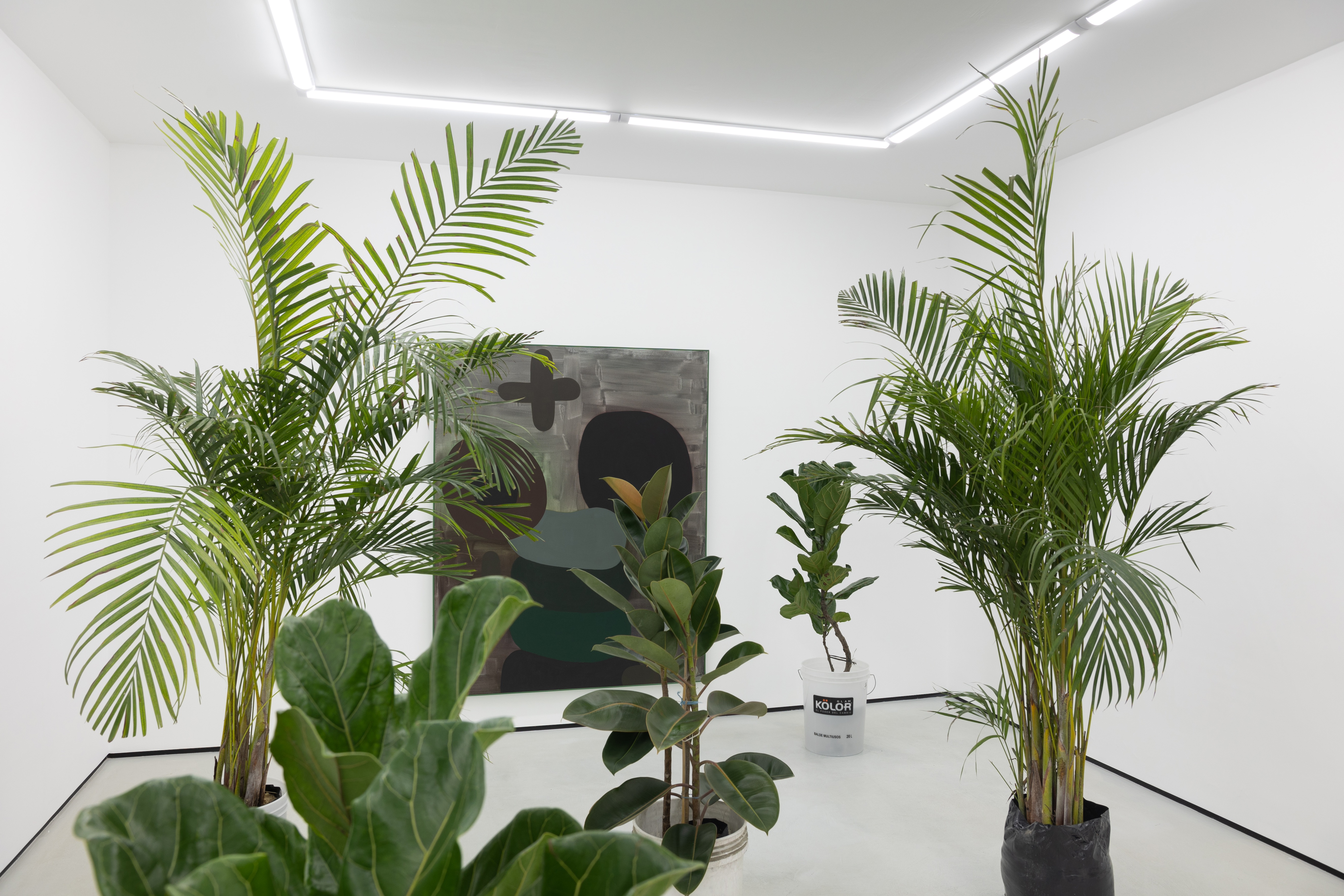

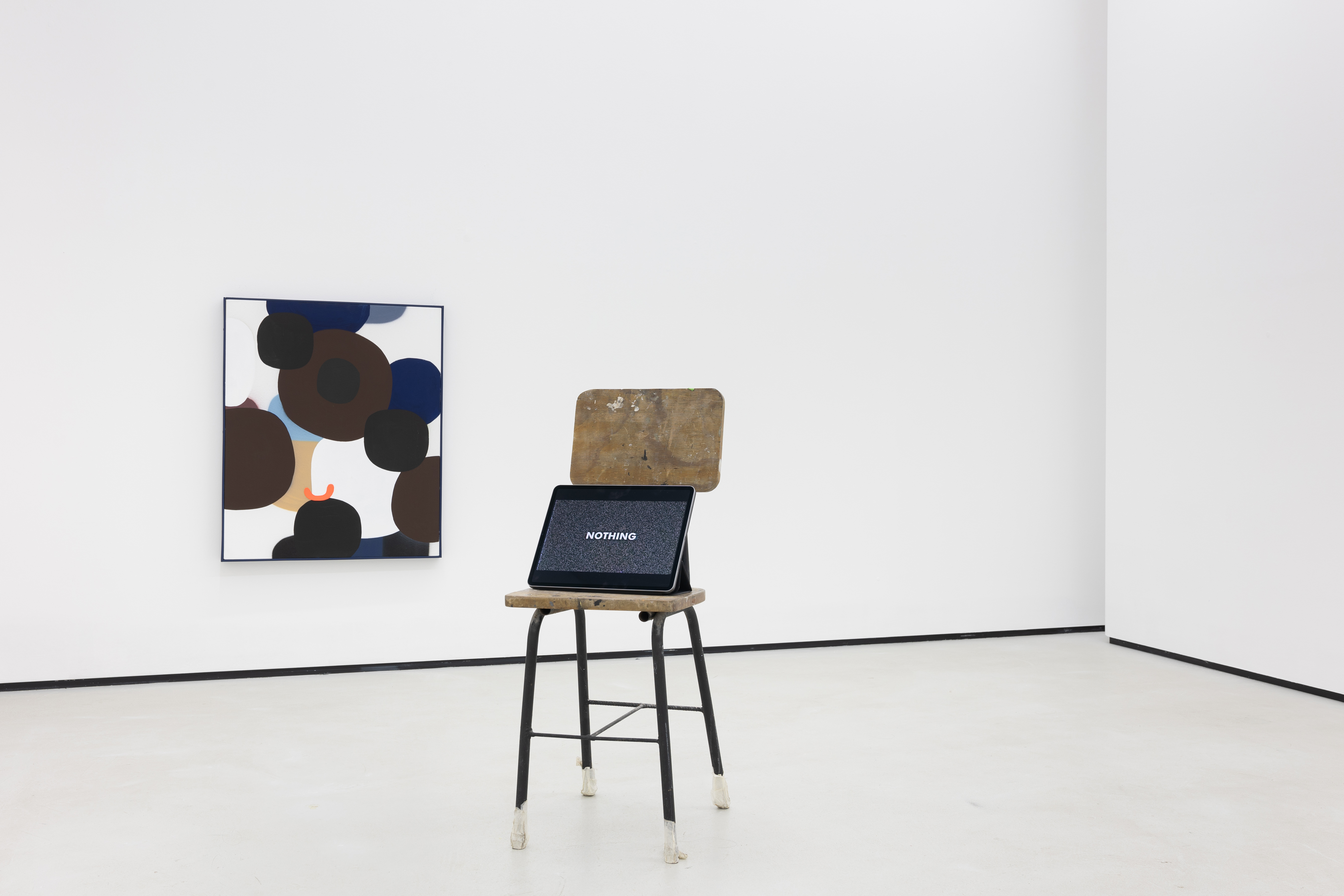
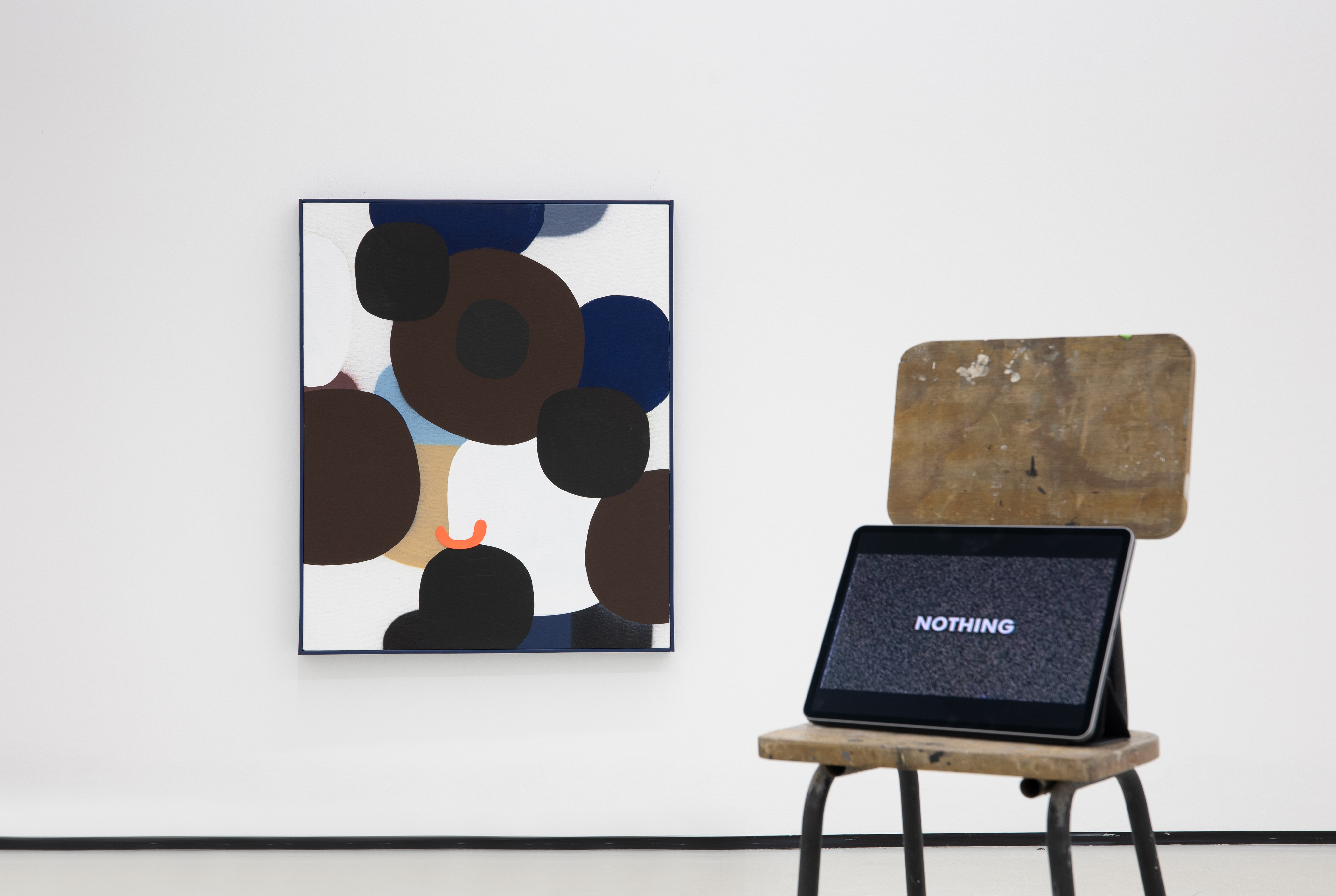
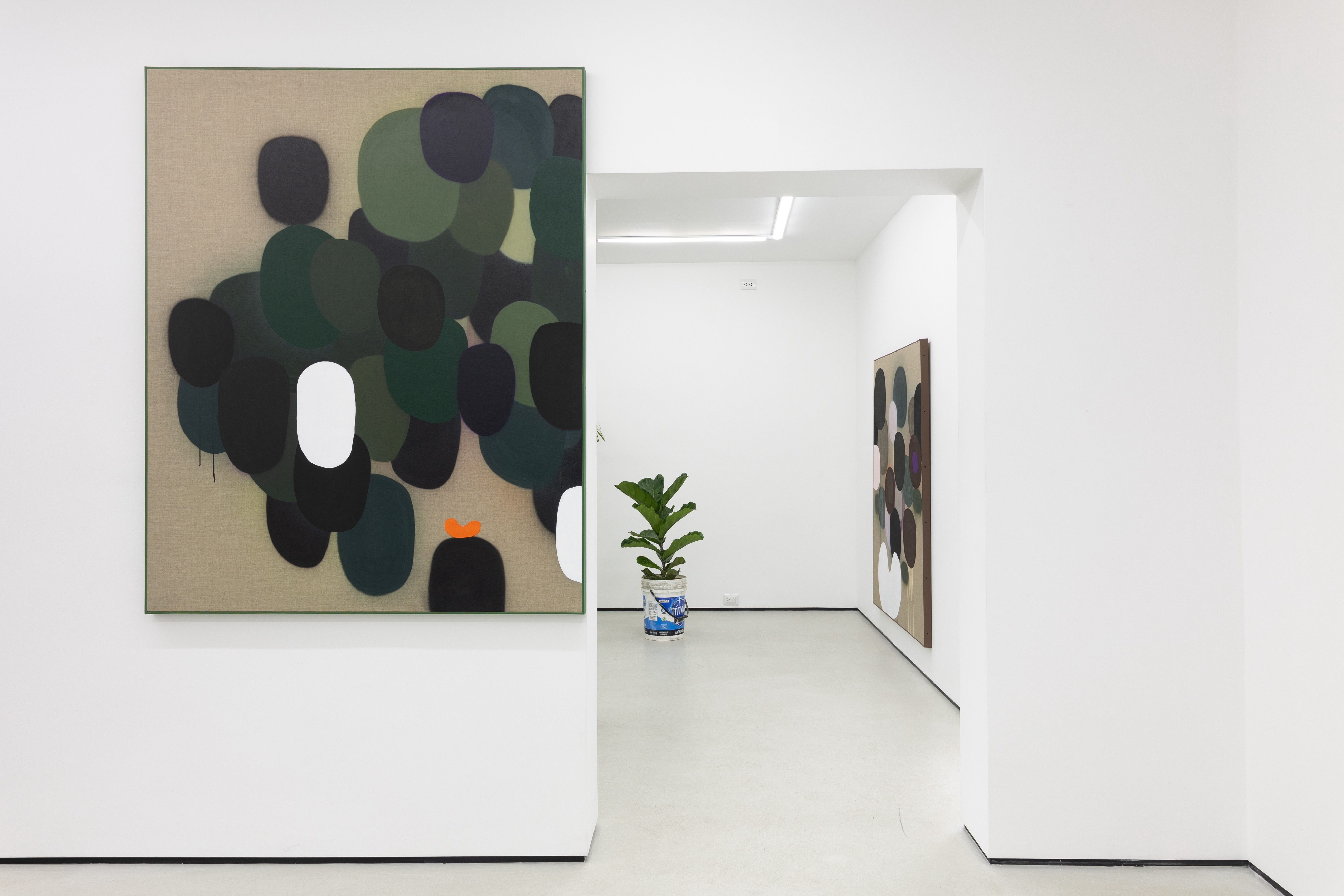
**ENLACE gallery presents the first solo exhibition of Óscar Florit in Peru.** Under the enigmatic title *4 8 15 16 23 42*, the artist from Mallorca presents six canvases measuring 162 x 130 cm, arranged in a space occupied by plants, among which we recognize a palm tree, a kentia, and a ficus. The title, a sequence of six numbers, is a direct reference to the hit television series *Lost*, aired by ABC between 2004 and 2010. The numbers appear throughout various episodes, generating coincidences without apparent reason, eventually forming the winning sequence of a lottery ticket that makes one of the protagonists a multimillionaire. By using them as the title of this project, Florit invites us, perhaps, to solve a riddle. Even the titles of the artworks are based on these same "magical" numbers, evoking luck or mystery—an enigma that leads us to the idea of play, where both the attempt and the success—and often fortune—lead to victory. In this collection of works, we perceive the aesthetics of play, not so much as the representation of a process, but as what remains after an encounter: a beginning, a response, the result of a move. In Florit’s paintings, shapes and colors orchestrate a series of relationships between elements now arranged in a specific way on the board. A limited color palette covers recurring forms that the painter layers on the canvas, one after another, assembling small groups that chase each other, keeping just the right distance, until the composition is complete. Each of his paintings thus constructs possible variations based on predetermined rules that are, in part, later forgotten. Play allows us to return to the same thing over and over, opening new paths in a kind of dizzying yet bounded dance. Everything in this exhibition appears to be in motion. Florit envelops us in creations that integrate vectors vibrating in triangular, musical, and numerical compositions—forms that evoke pure ornament, without complexes or hierarchies. As in grotesque art, there is no separation between its elements, whether they are animals, plants, or abstractions made of simple straight or curved lines. As in grotesque art, different and divergent meanings share the same surface, leaving us astonished and entangled, captivated by an enigmatic face. We enter an apparent chaos only to find ourselves in a space controlled by details and repetitions. Play and ritual share the stage; they are not distinguished by their appearance but by their purposes and rules. In both cases, what matters is practicing them repeatedly. In these paintings, closed shapes rest on the uncertain outline of spray paint, both set against a monochrome background or raw canvas. There are more capsules than circles. The disorder of spray paint is countered by the control of the line. Florit enjoys painting, and with this project, he shares his joy with the viewer. We could even say that each of these paintings is a self-portrait. Their dimensions match the painter's body: the surface of these six canvases corresponds to what his outstretched arms can embrace. He invites us to participate in his exhibition, which, like a stage or a dance floor, encourages us to join the party, lifted by a scale of colors that rise and fall and suddenly stop. If there is something ornamental and exquisitely decorative about Óscar Florit’s paintings, it is precisely the good rhythm his elements maintain on the dance floor, where we wander freely among the plants and paintings. The visual language he employs leaves enough space for the audience to jump in, participating in a carnival-like parade of shapes and colors, following the rhythm Florit has chosen for his celebration. Not entirely abstract, these paintings resemble the board of *Go*, the ancient Chinese game, where the pieces form chromatic relationships between themselves and the orthogonal background. Or perhaps, the overhead view of a dance floor where the dancers wear top hats. Even so, among his shapes, we can glimpse a sort of grimace that warns us that, one way or another, we are far from solving the enigma. Francesco Giaveri
Receive more information on available works from this exhibition.

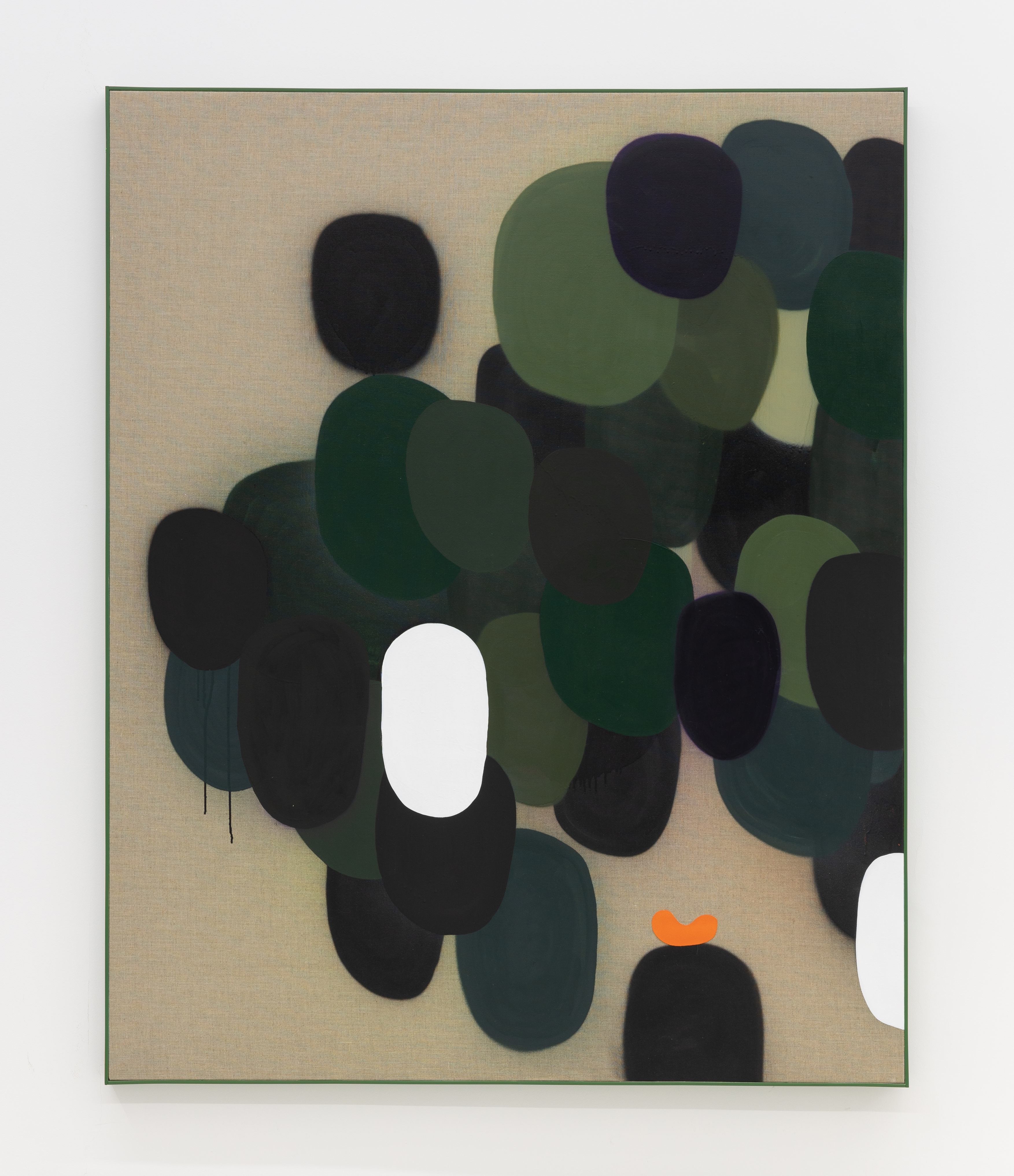
42 (Dos Blancos)
2024 Mixed media on canvas 162 x 130 cm
Luis (Uno Azul)
2024 Mixed media on canvas 162 x 130 cm
8 (Dos Azules)
2024 Mixed media on canvas 162 x 130 cm